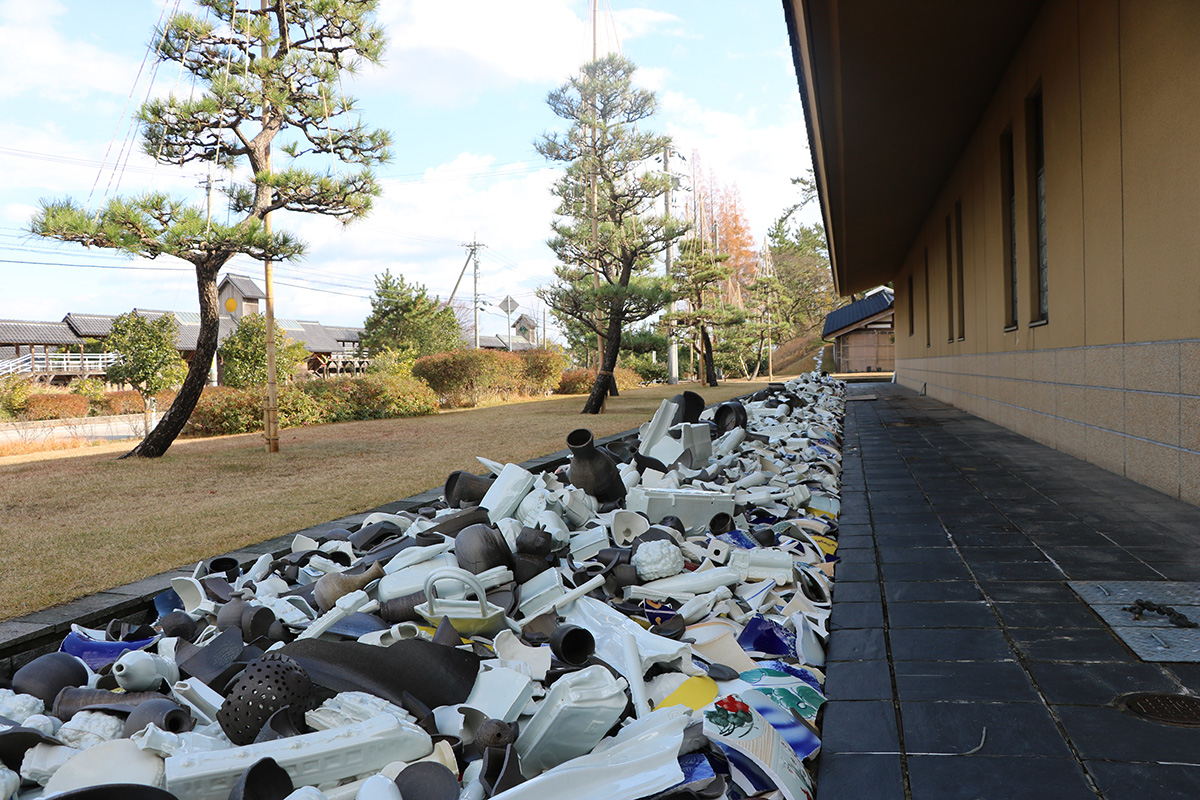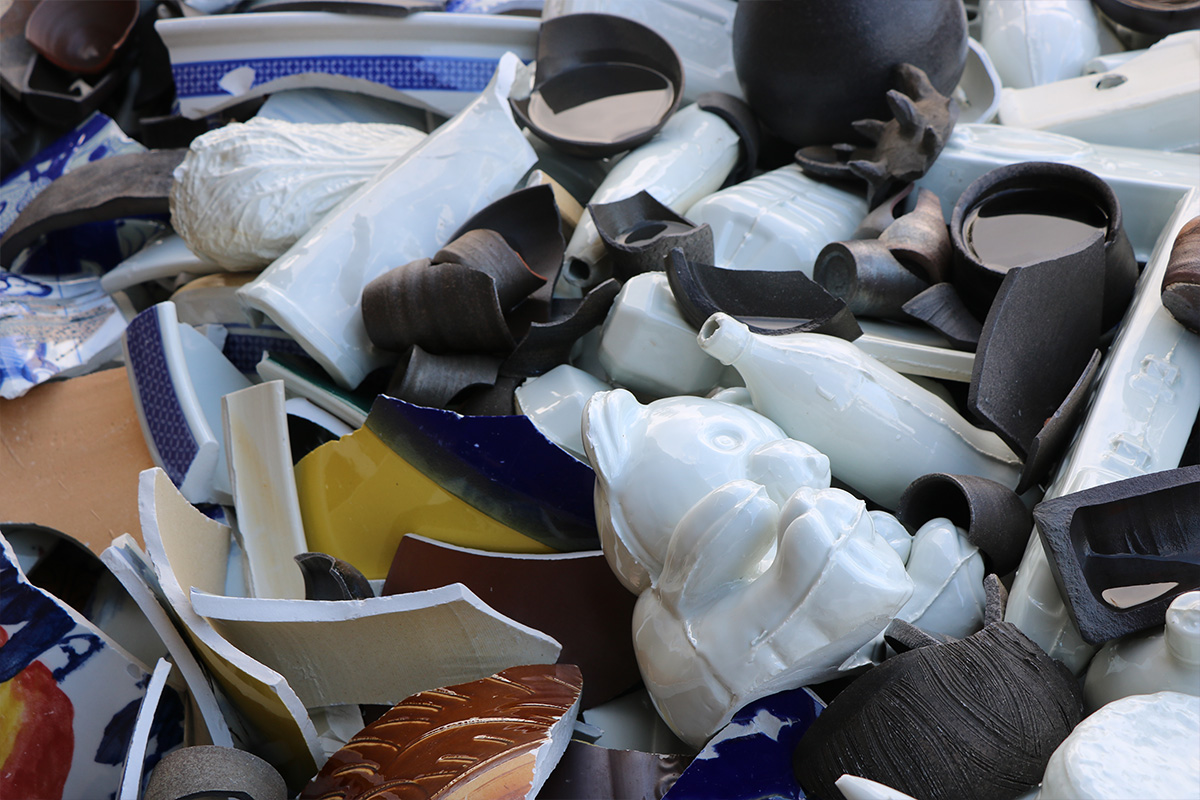Suzu-yaki (Suzu-style pottery), which began in the 11th century under the influence of the Eurasian Continent, was a representative of Japanese pottery in the Middle Ages. The artist laid porcelain from Jingdezhen, China’s “Porcelain Capital” together with Suzu-yaki ceramic items along the beach close to the Mitsukejima Island. Mitsukejima appears in the legend of Kōbō Daishi, a monk who studied Buddhism in China. The pieces of porcelain, displayed as if they had been washed up on the seashore, included the items made by the artist in the shape of everyday objects, and invited viewers to reflect on Japan’s relationship with mainland Asia as well as the globalisation of today. After the festival, the artwork was relocated to the Suzu Ware Museum in the Takojima district to be a permanent installation.
Suzu-yaki (Suzu-style pottery), which began in the 11th century under the influence of the Eurasian Continent, was a representative of Japanese pottery in
the Middle Ages. The artist laid porcelain from Jingdezhen, China’s “Porcelain
Capital” together with Suzu-yaki ceramic items along the beach close to the
Mitsukejima Island. Mitsukejima appears in the legend of Kōbō Daishi, a monk
who studied Buddhism in China. The pieces of porcelain, displayed as if they had
been washed up on the seashore, included the items made by the artist in the
shape of everyday objects, and invited viewers to reflect on Japan’s relationship
with mainland Asia as well as the globalisation of today. After the festival, the
artwork was relocated to the Suzu Ware Museum in the Takojima district to be a
permanent installation.

